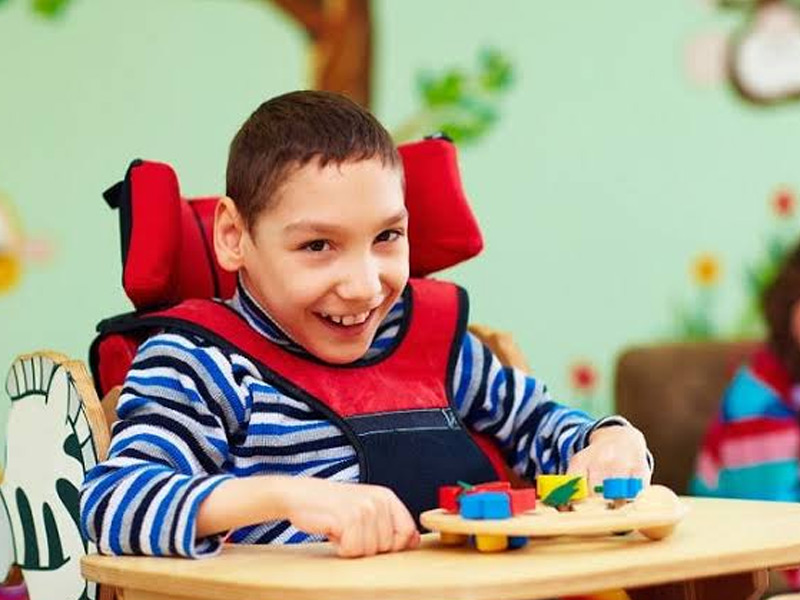
Cerebral palsy is a large group of motor disorders that can have an impact on the movement and muscles of a child. It can cause damage to the brain and very often occurs before birth. The symptoms of cerebral palsy start showing when the child is one or two year old. This group of disabilities can lead to diturbed movement which includes stiffness, floppiness, rigidity of the limbs, abnormal posture, involuntary movements and difficulty in walking. Children who have cerebral palsy can also face issues with swallowing and can have eye muscle twiches, in which the eyes cannot focus on the same object at the same time.
Table of Content:-
3. Most children have more additional conditions along with cerebral palsy
5. The most common cause of cerebral palsy is injury to the brain during pregnancy or childbirth
6. First or second year of birth is the typical time to diagnose CP
7. Generally, cerebral palsy does not affect a child's intelligence
World Cerebral Palsy Day is a movement that is marked every year on October 6. It is for the people suffering from cerebral palsy and their families, and the organisations that support them, in around more than 75 countries. The main goal is to make sure that these children and adults with Cerebral Palsy (CP) get the same equal rights, access and opportunities as anyone else without a disability in the country. To honor this special occasion, Onlymyhealth editorial team talked to Dr. P. P. Ashok, Head of Neurology, P.D Hinduja Hospital, Mumbai, Maharashtra, to know about cerebral palsy.
Things to know about cerebral palsy
There are more than 17 million people in the entire world living with cerebral palsy. It is the most common type of physical disability that one can suffer from during childhood. According to Dr. P.P Ashok, here are 9 things to know about cerebral palsy:
1. Cerebral palsy is a large group of disorders

Cerebral palsy is a huge group of various disorders. There are different types of CP that can affect different parts of the brain. Each and every kind leads to distinct movement disorders such as spastic cerebral palsy, dyskinetic cerebral palsy, hypotonic cerebral palsy, ataxic cerebral palsy and mixed cerebral palsy.
2. It is the most common motor disorder in children
Cerebral palsy is the most common motor disorder in children. According to the estimated numbers of CDC's Autism and Developmental Disabilities Monitoring (ADDM) Network, around 1 in 345 children have been diagnosed with CP.
3. Most children have more additional conditions along with cerebral palsy
A lot of children with cerebral palsy are suffering from one or more additional conditions along with CP, also called co-occurring conditions. These additional conditions in children include epilepsy, autism, etc.
Also read: Manage Cerebral Palsy With Specific Medical Regimen
4. Delay in movement milestones can be a major sign of CP
One of the main signs of cerebral palsy is the delay in movement milestones in a child. From birth to 5 years of age, a child should be able to achieve certain basic movement goals, such as walking, sitting and standing. If there is a delay in this development, there is a high chance that the child is suffering from CP.
5. The most common cause of cerebral palsy is injury to the brain during pregnancy or childbirth
In most cases, cerebral palsy is caused by injury to the child's brain during pregnancy or childbirth. Damage to various parts of the brain can can cause different types of cerebral palsy. Brain damage can lead to certain problems associated with poor motor control, coordination, and balance.
6. First or second year of birth is the typical time to diagnose CP

Cerebral palsy is mostly diagnosed during the first or second year after birth. If a child’s is having mild symptoms, it is at time difficult to make a proper diagnosis until the chil is a few years older. The motor disabilities start to show during the first few years after birth.
7. Generally, cerebral palsy does not affect a child's intelligence
Generally, CP does not affect a child's intelligence but the brain trauma can sometimes show signs of intellectual disability. Most of the children with cerebral palsy have an average or above-average intelligence and can function like a normal human being.
8. Symptoms of CP are different in each child
Symptoms of cerebral palsy can be different in each child based on the location of the brain injury or trauma. Some kids experience too much restricted movement, while other face a lot of difficulties in understanding things.
Also read: Celebral Palsy Awareness Month: Know The Types, Symptoms, Causes And Treatment From A Neurologist
9. Children with cerebral palsy can experience pain
Some children who have cerebral palsy experience physical pain due to abnormal body posture or movement of muscles and joints. Others have pain after a period of time because of wear and tear of the muscles. Pain is one of the common signs of CP.
A newborn baby to 5 years of age, a child should be able to achieve basic movement milestones such as rolling over, sitting, standing, and walking. If there is a delay in reaching these movement goals, then it can be a sign of cerebral palsy. It is important to notice these symptoms as some children without CP can also have some of these signs. It is better to get an early diagnosis in such cases.
Image credits: Flintrehab.com
Also watch this video
How we keep this article up to date:
We work with experts and keep a close eye on the latest in health and wellness. Whenever there is a new research or helpful information, we update our articles with accurate and useful advice.
Current Version
